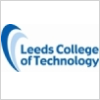Access keys
Search Skip navigation
Huddersfield Technical College
Year 1: Mobile learning 4 mobile people (M4M) 2007/2008







This phase 1 project revolved around three areas: teaching and learning using the device, portfoli- building and other benefits. There were seven colleges in the consortium and the project used a variety of devices, but mainly the ones listed below, to capture and gather evidence:
- HTC Shift
- HTC Advantage
- HTC TyTN II
- IPOD Classic
- IPOD Touch
- ASUS eee PC
College and Project Background
The M4M Project is a seven-college partnership based in West Yorkshire. Led by Huddersfield Technical College, the partnership comprised five further education (FE) colleges providing general further education, work-based and adult learning and two colleges providing sixth form education.
West Yorkshire is an expanding conurbation of towns and cities including Leeds, Bradford, Huddersfield, Pontefract, Wakefield, Halifax, Castleford, Mirfield and Shipley. Each college is located close to the centre of its respective town or city and serves the surrounding community:
- Huddersfield Technical College focused on the probation, ESOL and Citizenship areas and collecting evidence for portfolios.
- Wakefield College focused on helping hairdressing learners to collect evidence for portfolios.
- New College Pontefract gave HTC Advantages (smartphone/ultra-mobile PC) and iPod Classics with mics to Archaeology students, BTEC students, Duke of Edinburgh students and Applied ICT Students for collection of portfolio evidence.
- Huddersfield New College used HTC Shifts (UMPC) and IPod touches with children’s care students to collect evidence.
- At Leeds College of Technology print media students and ESOL students used HTC Advantages (smartphone/UMPC) and HTC Shifts (UMPC) to collect evidence for portfolios.
- Joseph Priestley College used ASUS eee PCs mini notebooks with care students to collect evidence for portfolios.
- At Shipley College care students, IT students, horticulture students and games media students used HTC Shifts (UMPC) and HTC TyTN IIs (smartphone) to collect evidence for portfolios.
Aims
- All colleges will engage in a common core activity of embedding the use of m-learning technologies for the purpose of evidencing learning. Learning evidence will be gathered through portfolio building, personal development planning and on-line learning and testing.
- Each partner college will identify, repurpose and create a collection of learning resources to engage learners. Resources will be shared across the partnership and MoLeNET community.
- Colleges will establish a robust, secure wireless network to facilitate low cost sustainable connectivity.
- In addition to common core activity of learning evidence gathering using UMPC and PDAs, Colleges will evaluate a range of devices for teaching and learning.
- Partners will engage in comprehensive evaluation and dissemination of all activities to further extend and embed good practice across the consortium.
- This project will demonstrate that mobile technology can improve learning performance across a range of educational contexts and curriculum.
Further aims from partner colleges
- To provide early years students access to IT both in college and more importantly in their work placements (two days a week). In addition to general IT access and access to the college VLE during lessons, the devices (HTC Shifts) would give students access to IT at the placements so that they could work on completing their professional practice files during the placement.
- To provide access to global positioning systems (GPS) and geographic information systems (GIS) especially during geography fieldwork
- To provide students with the ability to capture sound, video and limited text
- To provide A-level English students with set texts as podcasts, both on the VLE and on mobile devices
- To explore uses of the Nintendo DS
- To increase use of the e-portfolio system
- To give students access to simple and 'cheap' video production facilities
- To provide initial assessment for IT
- To provide health and safety materials for care
- To provide an e-portfolio
Objectives
The project will:
- ensure successful delivery of the project, all partners will establish a robust and secure wireless network. To ensure the network performs reliably and can be sustained beyond the life of the project, enabled by the local JISC RSC, technical support staff will share ideas and experience gained during the project
- develop systems and procedures to allow evidence collected using the device to be transferred to a secure on-line portfolio, a learning environment or network storage. Evidence of learning may be recorded using a variety of input formats such as video, images, sound, text or formative assessment results
- use m-learning equipment in a variety of environments to enable students to collect evidence to facilitate the generation of personalised portfolios/e-portfolios
- enable work-based learning staff to harness innovative forms of assessment using mobile devices and the learners’ sense of pride and ownership of their e-portfolio.
- raise levels of success through more flexible access to learning and learning evidence gathering.
- extend participation in teaching and learning by utilising m-technologies to engage the non-traditional learner.
- develop and share engaging m-learning resources
- trial interactive m-learning resources with students using a range of mobile learning devices.
- train college staff and students in the use of mobile devices.
- evaluate the effect and impact of mobile learning in teaching and learning and its effect on retention and achievement.
- ensure our learners and teachers have access to the latest technology and can deal with a rapidly developing world.
- establish and share best practice in the use of mobile learning
- increase engagement with employers by introducing innovative m-learning methods of generating and recording learning evidence in the workplace. This will considerably streamline evidence gathering and enhance the diversity and mobility of portfolios.
Further evidence from partner colleges
The project will:
- enable work-based learning staff to harness innovative forms of assessment
- extend participation in teaching and learning
- train college staff and students.
Benefits
Benefits for learners, across all learner groups
Learners gained:
- interesting ways for learning to be delivered
- access to ILT, which some learners did not have
- flexibility to produce evidence in their own time
- evidence recording in the workplace
- increased access to IT on placements and trips, etc
- flexible access to learning activities
- the opportunity to manage their own learning
- extra engagement through added interest
- the facility to record and collect data in a way not previously possible
- an increase in the variety of devices available to them
- an increased enthusiasm for IT as a result (in early years previous comments have included 'we don’t have time to do IT')
- access to electronic interactive learning materials in every classroom
- the opportunity to use m-learning between sessions or even at home
- more personalised learning
- ownership and responsibility
- the facility to communicate more effectively
- personalised devices
- greater facility for multi-tasking
- increased experience of technology
- the ability to produce a better quality of materials
- motivation and group cohesion.
Benefits for staff
Staff have gained:
- because students are able to access IT more readily, without needing to get near desktop equipment
- students are more engaged in the learning process
- the expectations of students on placement can be raised as a result of the devices
- access to a wider range of devices in the college to enhance teaching and learning
- students’ improvement in behaviour
- because there is reduced strain on learning resource centre resources
- the opportunity to experience new technology
- the opportunity to change the way they teach.
- the opportunity to increase personalisation
- an introduction to new technologies
- new teaching methodologies
- increased student engagement
- more experience of technology and learning applications
- increased motivation of learners
- less work disseminating and collating
- an opportunity to experiment with new learning activities
- the confidence to tackle new projects
- more flexibility of delivery
- more evidence gathering on site
- portability and less to carry
- training and better IT skills
- the potential to use VLEs more flexibly.
Benefits for the lead college
The lead college has gained enhanced reputation and credibility because:
- it is known that they can be relied upon for effective project delivery
- they are piloting innovative work at the leading edge of developments in teaching and learning.
Benefits for institutions taking part (partners and colleges)
They have gained:
- experience in mobile learning and its support
- a stronger network of colleagues across the region
- networking with other colleges and feeling united
- benefits to learners and staff
- exposure to new portable technologies
- the opportunity to experiment with different technologies
- far more from a project of this type than would otherwise be possible – if they were one of the smaller college involved
- savings through central purchasing of devices, benefiting from a broad expertise in the consortium
- improved trust between partners
- appreciation of the value of collaborative ventures
- the opportunity to share good practice
- the opportunity to compare opinions of equipment and troubleshoot problems
- new opportunities for work-based learning
- excellent lead college project management
- extended infrastructure
- potential cost-savings for staff with cheap/small devices.
Lessons learned
Teaching and learning lessons
- Mobile learning has enhanced the normal classroom learning experience, for example, the iPod touches have allowed students to work on texts when there is no PC present to listen to a podcast on.
- The project has shown that devices can add excitement and an additional dimension to fieldwork, work placements and in assisting students with severe learning difficulties and disabilities.
- Staff need more time to learn about the device, students generally learn more quickly and easily.
- Staff were initially enthusiastic about the technology but need much greater guidance on how and why to use it in teaching and learning
- The project was never properly embedded within learners’ activities because the devices did not become available until towards the end of their year. Because of this many of the ambitions and opportunities for learning were unfulfilled. It’s essential that a project aimed at changing teaching and learning practices is given sufficient lead time for the technology to play a full part in each learner’s study from day one, otherwise existing patterns of behaviour will prevent a genuine transformation of activity.
- Most of the courses involved definitely received a boost of energy and interest from the sheer novelty of the devices and their effect in making the learners feel special. Individual teachers have increased their knowledge of the specific technology involved and gained a successful experience in overcoming barriers created by technology which will be useful to them and their colleagues as new challenges appear. Teachers and trainee teachers have applied themselves to challenges of making technology have a positive impact on learning outcomes through re-engineering of learning activities.
- A particular strength of the project was the very positive reaction from most (though not all) of the learners. Enthusiasm for technology does appear to correlate with youth. There is clearly an enormous amount of energy for learning waiting to be tapped by future development along these lines.
- Cameras and PDAs worked better then UMPCs (people want something with little or no learning curve).
- Levels of ‘staff buy-in’ varied. Individual attitudes to change make a huge difference.
- Work-based use was more successful then in-college NVQ use, having access to devices in their own time seemed to work best
- Looking back, the initial vision for the project of taking colleges from little or no use of m-Learning to embedded e-portfolio building, was a little over ambitious. Achievements in the short timescale were remarkable, but there is still a to go. With the tight project delivery timescales behind them, we can now continue our journey towards this vision at a realistic and sustainable pace. It will take time to embed e-portfolio building using mobile devices in curriculum delivery. Possibly the most significant findings from the project are still to be discovered.
Project management lessons
The project needed more time.
Project managers need full support from management if the project is to be successful
It is easy to underestimate the amount of time needed for the project.
Working closely with learner groups that might not usually have been central to a learning technology initiative can improve the general understanding of their work and how ‘mainstream’ learners use technology generally. The project has been beneficial to management and support staff roles in the college as they can now better understand the learner’s perspective on technology and their reactions to new initiatives.
Efforts made to extend the effective use of technology in learning have benefited from the increased profileof the MoLeNET project which has been a useful point of discussion in meetings, drawing out thoughts and opinions around e-learning, both positive and negative, that would otherwise have remained hidden.
Because the teachers involved in the project were volunteers working with real learners and real learning outcomes, it wasn’t always easy to exert a true ‘project management’ approach to activities. Requests can be made and individuals can be coached, but it wasn’t possible to instruct or direct activity. The learners come first and teachers necessarily consider other requests as a (comparatively) lower priority.
The difficulties with the project (understanding the devices, ease of internet connection, adapting practices to accommodate limitations) were all largely caused by the inherently artificial nature of the project and do, perhaps, obscure even greater benefits that await future classes in which mobile devices are introduced more naturally. When learners can choose their own devices, are familiar with their operation before they use them for learning, are readily able to access the whole internet (rather than ‘mobile friendly”’ sites) and fast flat-rate data connectivity is ubiquitous, the only remaining problem will be how to maximise the learning opportunities available.
Learners will increasingly want to make use of their own technology within our institutions, and we need to adapt our environments for them rather than expecting them to adapt for our environment. That will cause challenges for IT departments, open debate on security issues, equality, classroom management and pedagogy. Conventional approaches to ban mobile phones don’t resonate with calls for learner-centred education – someone is going to exploit the advantages of enabling learner owned technology.
Small scale trials prior to the main roll-out would have helped establish the most appropriate devices and use.
More time was needed to involve staff and build confidence before using devices with students.
More time would have allowed them to produce more ‘how to’ guides in advance of the roll-out.
Partnership working lessons
The partnership has worked well together, mainly because of the effective management of the lead college.
The project needed more time – it is difficult to manage seven colleges and their needs.
The partners worked together really well because the partnership was based on an existing consortium so trust was already well established!
There’s an obvious collection of lessons in partner working around the benefits of shared problem solving, learning from other institutions practice, and the detrimental effects of slower decision making and responsiveness.
Timescales and workload constraints dictated that the lead college had to trust partner Colleges to work autonomously to work to deliver mobile learning to the project plan. Partnership meetings provided the main opportunity for monitoring and to ensure effective delivery of the project.